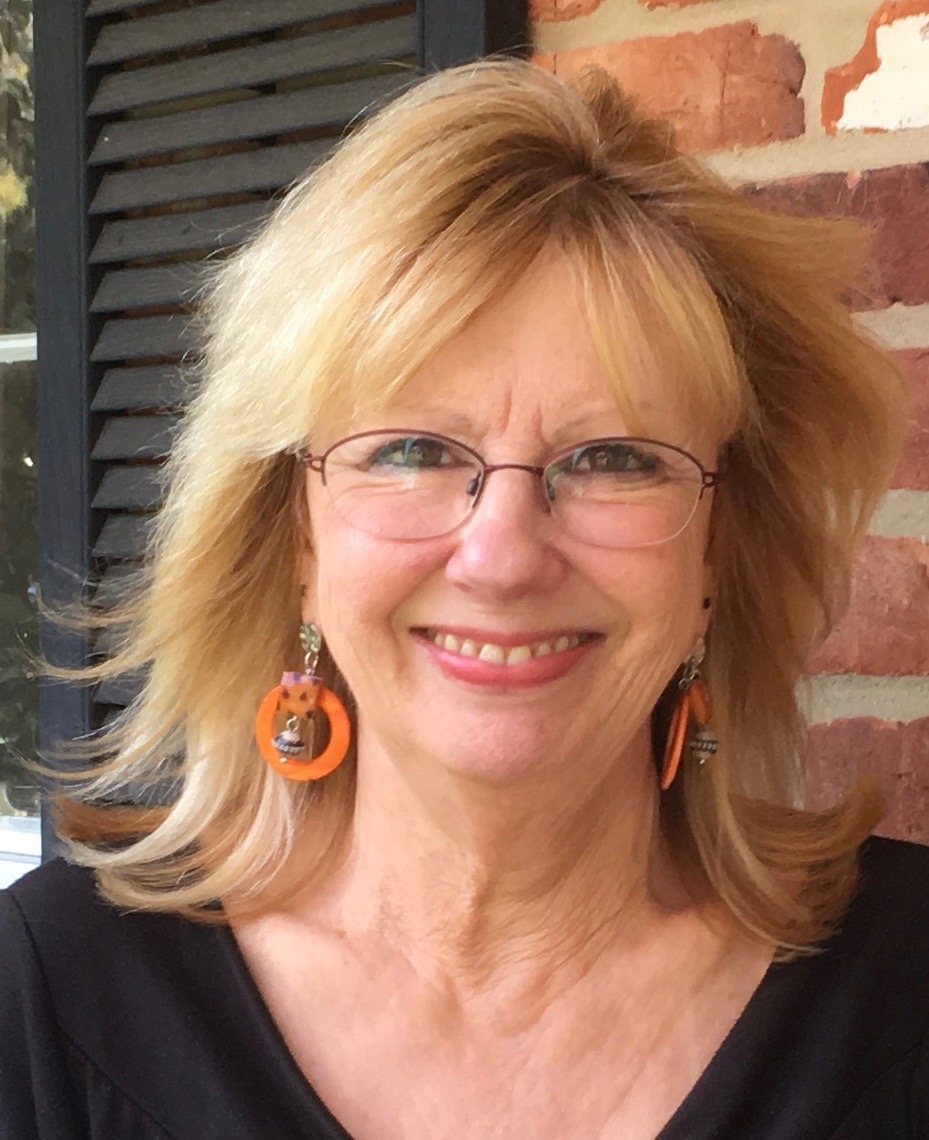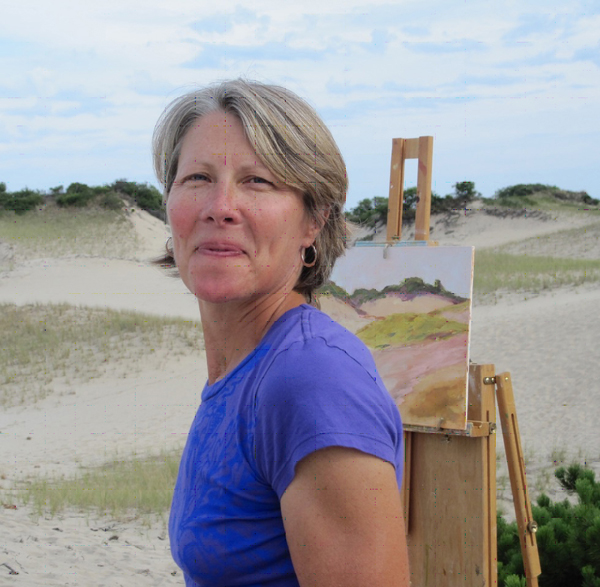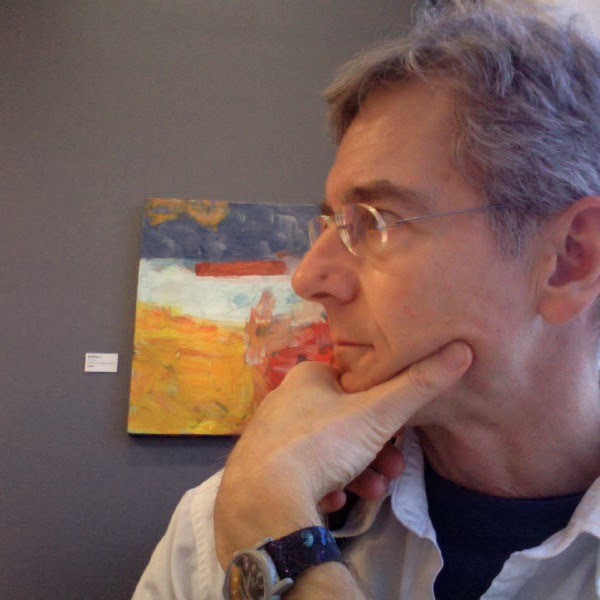The experience of playing freely during childhood must imprint itself indelibly in one’s psyche. So many artists and writers who grew up in small towns across America seem to have been fueled by these long lazy periods of spontaneity as children. I put Jill Brantley among those so endowed. She was fortunate to live in a small town in New England. No stoplights. Church steeples rising above oaks and maples. The whole nine yards. She remembers walking to school, riding bikes in the dark on summer nights, roaming with friends from yard to yard inventing games as they went along. Imagination sparking imagination. And a mother ringing a special bell at dusk.
Read moreKate McConnell: Capturing Color in the Landscape
How does the artist paint the landscape while, at the same time, paint from the “deeps” of the soul? Painter Emily Carr posed that question to herself as she painted alone in the forests of British Columbia sometime in the 1930’s. “What do I want to express? ... The arrangement, the design, colour, shape, depth, light, space, mood, movement, balance, not one or all of these fills the bill. There is something additional, a breath that draws your breath into its breathing, a heartbeat that pounds on yours, a recognition of the oneness of all things,” she writes in her journal.
Read moreGale Wallar Paints Avenues and Alps
Gale Wallar’s exactitude in describing what she sees around her is remarkable. Through the language of oil paint she creates compelling vignettes that put the viewer in the scene she is describing, as though present on the street in front of a row of buildings that she visited in one of her many years of travel. At some point, however, the viewer comes to the realization that the colors may be fresher and the perspective condensed. Wallar images the “real,” but, she remarks, her viewpoint “conveys a subjective reality affected by time and space.” In other words, the painted images may appear photographic, but subliminal qualities influence images in unexpected and compelling ways. Look for this in her attention to detail.
Read moreJudy Giuliani: Creating Structure and Spirit through Color
A plethora of sights and sounds like these greeted Judy Giuliani in the far-off places where her military families were assigned. First with her parents in the Navy and then with her husband in the Air Force. All this traveling meant that she lived in 36 different locations in 36 years! She could have lamented the fact that she was missing out on a typical American childhood. Instead, she chose to enjoy and absorb what each new place had to offer, eagerly observing the art and traditions of other cultures. Over time distinctive details were stored away in her mind’s eye until the urge to take up the brush lead her to include them in paintings.
Read moreLina Alattar: The Unscripted Experience of Painting
“Abstract work has its own way of explaining itself,” says Lina Alattar, an abstract painter at Touchstone Gallery who works in acrylics on canvas. To understand how her paintings speak, she tunes into each one by being consciously aware and open. “I just respond to the marks, because it’s the experience of painting that drives the painting.” Knowing that nothing is scripted opens the door to tolerance for “accidents” that happen during the painting process. For Lina, these unexpected happenings in the creative process preempt any preconceived ideas. Each one shows her the possibility of going in a different direction, a road less traveled perhaps. American contemporary painter Helen Frankenthaler summed it up saying, “You have to know how to use the accident, how to recognize it, how to control it, or ways to eliminate it so that the whole surface looks complete and born all at once.”
Read moreMcCain McMurray: Stained Paintings
Think about diving into the waters of the Caribbean. Imagine feeling the sensations of being under and in the water off St. Bart’s, St. Johns or Martinique. Cooling blues and greens float with muted reds, yellows or oranges. Then visit the newest paintings by McCain McMurray in his solo exhibit Immersion at Touchstone Gallery during the month of July. You’ll see slices of the Caribbean in his long vertical paintings—painted essays defining the essence of this watery space and the experience of exploring life in it.
Read moreLinda Bankerd: A Delicate Balance
Riding a bike the way Linda does takes a lot of exertion. That she burns calories as she whizzes through the landscape there is no doubt. But what she gains is more subtle. Forms blur their way into her brain, are stored there and often make an appearance in her abstract paintings. Likewise everyday colorful home objects and special rooms in the interior of her home, also penetrate her psyche and accumulate there until called upon when she faces a new blank canvas. With brush in hand and acrylic paints at the ready, those stockpiled sensations emerge and turn into colorful complex shapes and forms.
Read moreThe Abstract Icons of Paula Lantz
Paula Lantz always watches people as she goes about her day--in a restaurant, on the Metro, in a park or grocery store. Or at the mall. These folks aren’t doing much; just going about the business of living, but Paula wonders what each one is thinking or feeling, and makes a mental note of her guesses.
Read moreColleen Sabo: Playing Favorites with Oil
In her May 2016 Touchstone Gallery solo exhibition, A Few of My Favorite Things, Colleen Sabo introduces her new body of work in oils. Long a color painter in water media, Colleen shifted her focus to oil several years ago and has not looked back since.
Read moreFigure 8 plus 1 (Part 1)
Rimpo’s fascination with people continues today and is reflected in her figurative work. Her semi-abstract method of working results in portraits that are about a mood, an everyday activity, or a way of life, rather than detailed portraiture. She uses a variety of textural techniques in her paintings, but only uses a technique when she believes it enhances the story. In this exhibit you will meet people Rimpo saw when traveling within the United States and in Guatemala. In each case something grabbed her attention and made Rimpo feel she just had to tell the story. Can you find a story in her paintings?
Read moreMcCain McMurray: From Architectural Drawings to Geometric Paintings
Malleability is a relative term depending on the material a person is trying to shape. For architects, wood, metal, masonry and glass are molded as necessary to build a structure inside and out. McCain McMurray worked with these materials during his 37-year career as an architect designing a variety of residential and commercial projects. It’s no surprise that he was drawn to architecture, because he started constructing things when he was a child growing up in North Carolina. Equipped with tools and wood scraps, he built many a tree house.
Read moreRima Schulkind: Dancing With Change
Rima Schulkind, a native of New York City, came to Washington DC at age 15 and has remained ever since. In 1972 she obtained a sociology degree before realizing the profession was not for her. Wondering what to do next, she “almost accidently took a ceramics class with the worst teacher in the world.” Rima recalls. “But the clay felt heavenly to my hands, and I knew I wanted to make things with it.” Serendipity #1.
Read moreAleksandra Katargina: Painting the Road to Happiness
The color of a bud opening in spring, dismal gray leafless trees looking slightly reddish from a distance, and the almost crass lemon yellow of blooming daffodils announce the freshness of each new spring. The transformation of dormant life into energetic green and wild color is so powerful that poets wax on about it and artists paint about it. Aleksandra Katargina, a blossoming young painter living in the DC area, is on the same path. She is the Touchstone Foundation for the Arts first Emerging Artist Fellow Winner mounting her first oil painting solo exhibition In Pursuit of Happiness.
Read moreCynthia Young: Color Field Painter
As I write this essay, I’ve got one eye on the keyboard and the other on the sunset. Glowing peach and gray clouds streak across an aqua sky. It’s the kind of color phenomenon that penetrates Cynthia Young’s eye and then transfers to canvas when she starts a painting. She begins by positioning her canvases on the floor, then pouring oil paint thinned with turpentine on to them. She watches the colors percolate and swirl around each other forming shapes. After the paint dries, the canvas goes up on the wall where she paints with a brush to finish up the composition. While observing her surroundings Cynthia learned intuitively to “see forms instead of objects.” She sees color patterns instead of tree canopies, and meditates on colors in the dark shapes forming storm clouds.
Read moreHarmon Biddle: Transforming Landscapes
Army families and those in the diplomatic corps move around the country a lot and often get stationed “overseas.” Harmon Biddle’s family fit those service categories. She lived in many states and European posts including Germany, Japan and England. While she didn't think of herself as an artist at a young age, she was often at the side of her mother who painted pastel portraits. Perhaps some of that artistic sensibility and some of those varied landscapes seeped into her psyche only to become an active force in adulthood. Harmon always dabbled in art but this took second row seat to becoming a psychoanalyst. She currently practices psychoanalysis and psychotherapy in tandem with her art.
Read moreGail Vogels: Exploring and Transforming
It's not surprising that Gail Vogels was inspired by the novel All the Light We Cannot See by Anthony Doerr when she set out to construct her new multi-media art works. She's been interested in literature most of her life, studying it in college and coming away with a bachelor's degree in the field. "That book was a launching point for me. I wanted to explore micro and macro themes happening simultaneously--those natural forces and choices that make us human beings. Using mixed media elements -instead of painting - I tried to figure out how to make various themes intersect on a picture plane. Plus, using scissors and glue is fun. The process is old school and the experience evokes your childhood."
Read morePat Williams: Coaxing Abstracts From Reality
"I enjoy painting more than anything else I’ve ever done, and I’ve done quite a few things," says Pat Williams, a native of North Carolina who now lives in Falls Church, Virginia. This is quite a remarkable statement coming from a person who majored in engineering and spent most of her career working for electrical cooperatives and other energy companies.
Read morePaula Lantz: Designer of Plans and Paintings
Paula is one of those rare persons who can make and follow a detailed plan of action and yet act spontaneously in the next moment. For the first half of her professional life, she focused on corporate jobs as a "structural planner" of employee self-improvement programs. In the second half she became an abstract painter. Perhaps these seemingly contradictory abilities are innate, or perhaps she learned them along the way.
Read moreDavid Alfuth: Bohemian Builder
"You are on your own now," said David Alfuth's father the day of David's graduation from the University of Wisconsin Oshkosh. David had a double major in drawing/painting and art history, and was equipped with teaching credits, so he was good to go. David took up the role of elementary art teacher in the Sheboygan school district for three years, enjoying the exuberance of children receptive to art - and, contrarily, putting up with the hard winters and enduring small town ordinariness. But the longing to travel finally caught up with him after his Triumph Spitfire sports car got stuck in the snow one too many times.
Read more















